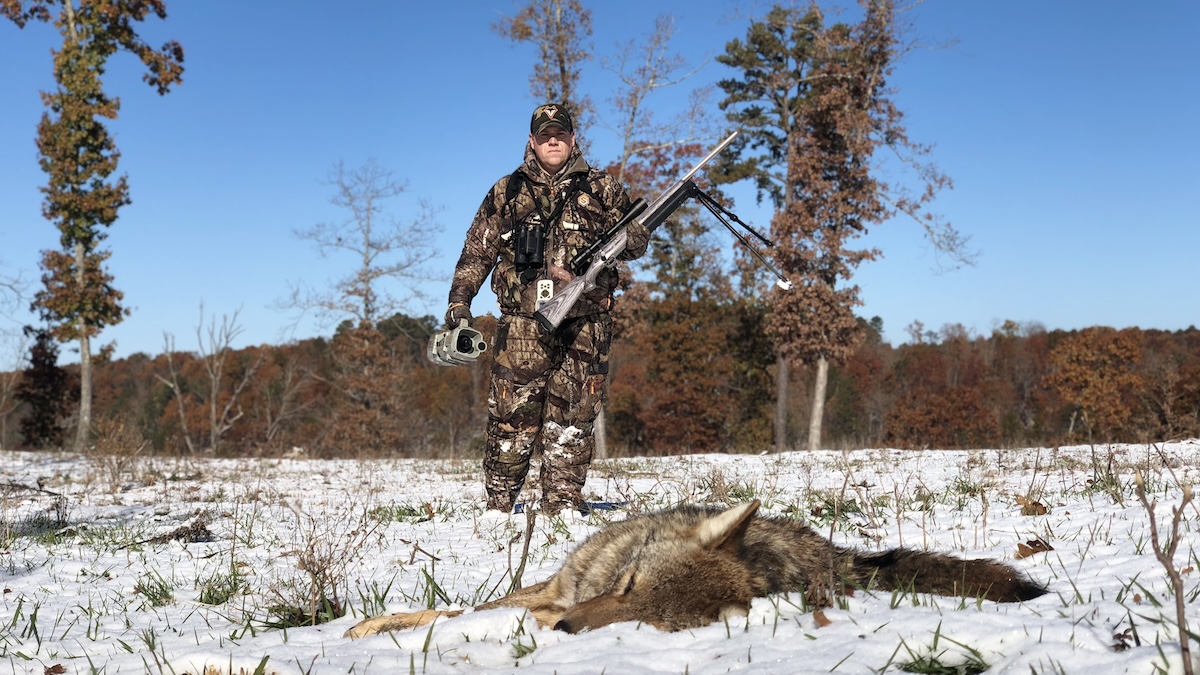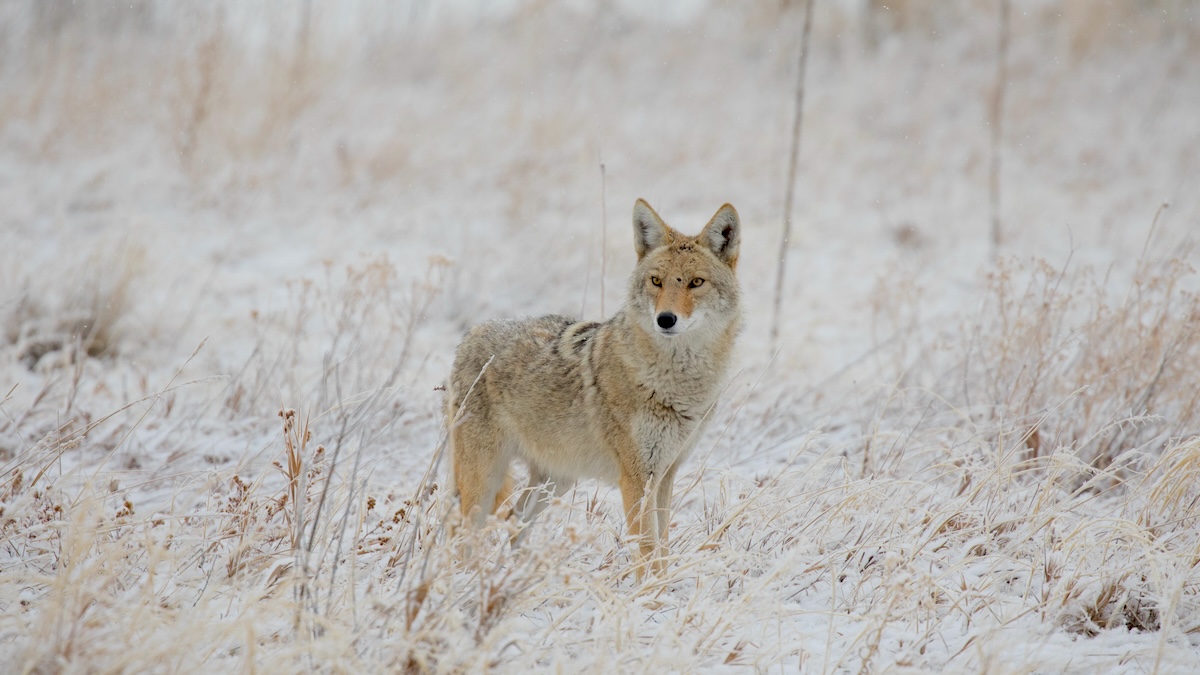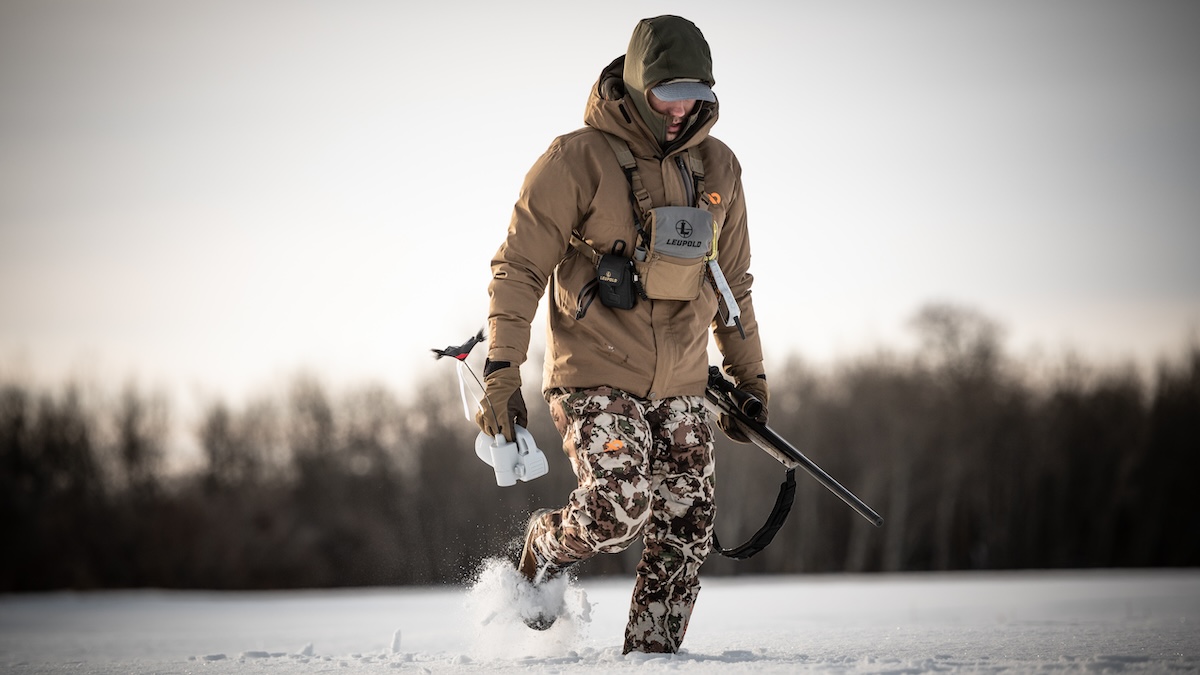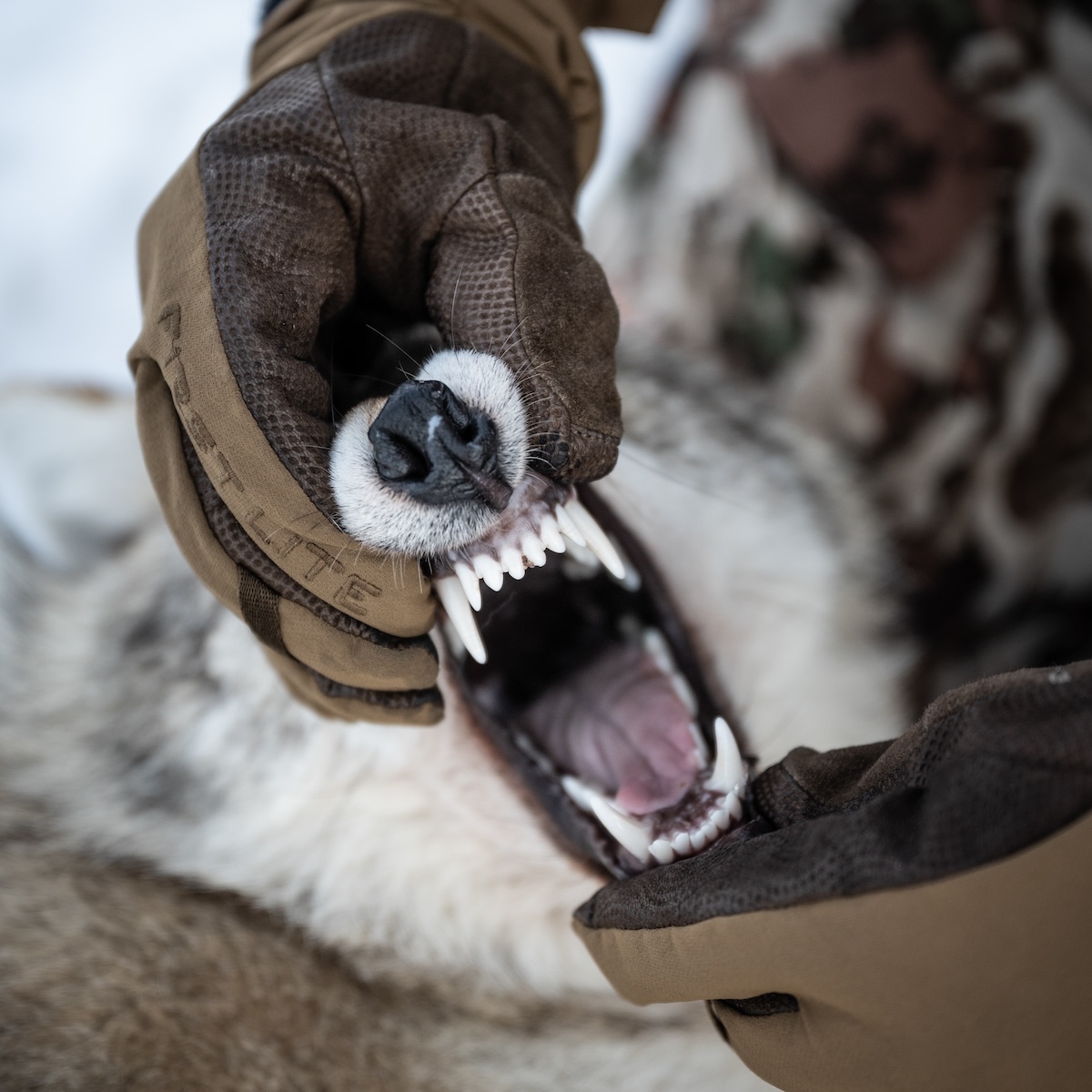Coyote hunting is an exciting and challenging pursuit that combines strategy, patience, and skill. For many hunters, it’s more than just a sport—it’s a way to manage predator populations to help support better deer, turkey, and other wildlife populations. For those who enjoy the thrill of the sport, coyote hunting can be one the most desired out of all the species of animals pursued.
As a teenager growing up in southern Missouri, I discovered the excitement of coyote hunting during the cold winter months with a close friend. Our first taste of success came in the early fall when we used an electronic caller with a pup-in-distress sound to lure coyotes into an open cow pasture. From that moment, we were hooked and spent many winter days honing our skills and learning the fundamentals of coyote calling.
Over the past two decades, my passion for predator hunting has grown from a seasonal activity to an almost year-round pursuit. In the last ten years, I’ve especially embraced every opportunity to experience the thrill of seeing a coyote streaking toward my calls. Some of my most fulfilling moments, however, have been introducing beginners to the art of coyote calling. Sharing my knowledge and helping them successfully call coyotes up close and consistently has been incredibly rewarding. To help those who want to learn for themselves, let’s examine the essentials of coyote hunting, covering everything from the reasons behind the hunt to the best strategies and gear.
The Purpose of Coyote Hunting
Coyote hunting is vital for predator management. With coyote populations rising across much of the United States, hunting helps maintain balance within local ecosystems. Coyotes can significantly impact deer, turkey, and small game populations, and unchecked growth can lead to livestock predation.
While coyotes aren’t typically hunted for meat, their pelts are valuable for fur and crafting. Educating non-hunters about the role of predator hunting in conservation can be controversial and often a difficult conversation. But it’s crucial to continually convey the importance of coyote hunting as a wildlife management tool.

Coyote Range and Legal Considerations
Coyotes are among the most adaptable predators in North America. They can be found in almost any environment, from remote wilderness areas to urban neighborhoods. Because of their adaptability, hunters can pursue them across the country.
Hunting regulations for coyotes vary by state, but in most places, they are considered a non-game species, meaning they can be hunted year-round with few restrictions. However, always check local laws before heading afield. For example, in my home state of Missouri, coyotes can be hunted nearly all year, with a brief pause during the spring turkey season. Yet, a legal turkey hunter is allowed to shoot a coyote if it is encountered while hunting, so lucky for coyote hunting enthusiasts like me, there is not much time when we can’t shoot a coyote.
With longer seasons and opportunities to hunt, plus many predator management programs, hunting is often encouraged to help reduce conflicts with wildlife, livestock, and even human activity.

As mentioned earlier, coyotes can be successfully pursued year-round. However, the best time to hunt coyotes is typically late fall and winter. As temperatures drop, coyotes become more active during daylight hours, making them easier to target. Breeding season, typically in late January through March, is another peak period when coyotes are highly vocal and responsive to calls.
Again, turkey hunters are often interrupted at least once a season by a pesky coyote wanting a free meal, making this time of year an excellent time to hunt. As spring ends and summer begins, coyotes have their pups, prioritizing the need to find prey. When hunting during this period, coyotes are noted to respond to a call easier and faster than at other times.
Spring and summer can produce exciting encounters with coyotes responding to calling, but one of the best times of day for coyote hunting is early morning or late evening during the fall and winter. Coyotes tend to move during these cooler periods, as they need to eat more to gain energy and stay warm in the cold.
Coyotes thrive in various habitats, but their preferred areas often include open fields, brushy edges, and wooded areas near water sources. In agricultural regions, they frequent areas near livestock and crop fields. In western states, wide-open prairies and sagebrush flats are hotspots.
Pay attention to regional differences, as terrain and coyote behavior can vary across the country. Scouting for tracks, scat, and vocalizations is crucial in identifying active hunting locations and where the best places for you to hunt will be.

Essential Gear for Coyote Hunting
Now that we know when and where to hunt coyotes effectively, here are some of the most asked questions by new hunters. When visiting new hunters, they often want to know the best sounds to use, the most reliable calls, and the rifle’s caliber that is the best for shooting coyotes. You’ll need the right equipment to succeed, yet it is vital to find what works best for you by experience for yourself.
Rifles & Calibers: Popular calibers for coyote hunting include .223 Remington, .22-250, and .243 Winchester. These calibers offer flat trajectories and enough power for clean kills. However, the list could go on and differ with every predator hunter. Read Jordan Sillars’ article on the 5 Best Coyote Hunting Cartridges to learn more.
Scopes: A quality optic with magnification is essential for long-range shots. A more comprehensive range is vital for hunting coyotes so that you can find a fast-moving target quickly. Check out our favorite scopes under $500 right here.
Calls: Electronic calls and mouth calls mimic distress sounds or coyote vocalizations to lure them into close range to make the shot. As for what sounds work the best, this, too, will be different with every hunter you ask. However, many would agree a lone howl is one of the most effective coyote vocal sounds and can add realism to many calling sequences. As for distress sounds, the rabbit in distress is the most used; for good reason: it has called in more coyotes than any other sound. It is vital to have a wide range of distress sounds, such as rabbit sounds, rodents, birds, and anything that sounds like a free meal to a hungry coyote.
Decoys: Motion decoys, such as spinning tails, can grab a coyote’s attention and draw it closer, increasing the effectiveness of the sounds you use on your calls.

Choosing the Right Call
Coyotes are highly vocal, and choosing the right call is critical. It often changes during the time of year you are hunting and the amount of pressure they have had from other hunters.
Every hunter’s calling sequence will vary. My favorite sequence begins with a subtle coyote howl, usually repeated four to five times a minute. My favorite calls to reproduce a realistic coyote howl are the ESH Custom Calls Coyote Howler Diaphragm Call or the Phelps Game Calls Coyote Diaphragm Male Howler.
Using a howl first introduces a coyote into the area, letting other coyotes know there is competition nearby and creating urgency to come to a call later in your sequence. After howling, I often pause for two to three minutes, then begin my distress sounds.
On my FoxPro Hellcat Pro or X Wave, I blast the sound of rabbits or rodents throughout the air to help lure a coyote into close range. The sounds are endless when using an electronic caller, yet my favorites include FoxPro’s Mrs. McCottontail and Bay Bee Jack, which are both distress sounds.

Common Mistakes to Avoid
The best learning lessons often come from making mistakes, but here are a few common ones to keep in mind when you go out to avoid any issues.
Over-Calling: Excessive calling can make coyotes suspicious. Use short bursts followed by silence.
Ignoring the Wind: Coyotes will circle downwind to confirm the source of a sound. Always consider wind direction.
Poor Scouting: Hunting areas without signs of activity wastes time. Always scout beforehand.
Coyote hunting is an excellent way to develop your skills as a hunter while supporting conservation efforts. By mastering the basics, choosing the right gear, and employing effective strategies, you’ll be well on your way to success. Whether you’re drawn to the challenge or the opportunity to contribute to ecosystem balance, coyote hunting is a rewarding experience for any outdoor enthusiast.
Read the full article here

